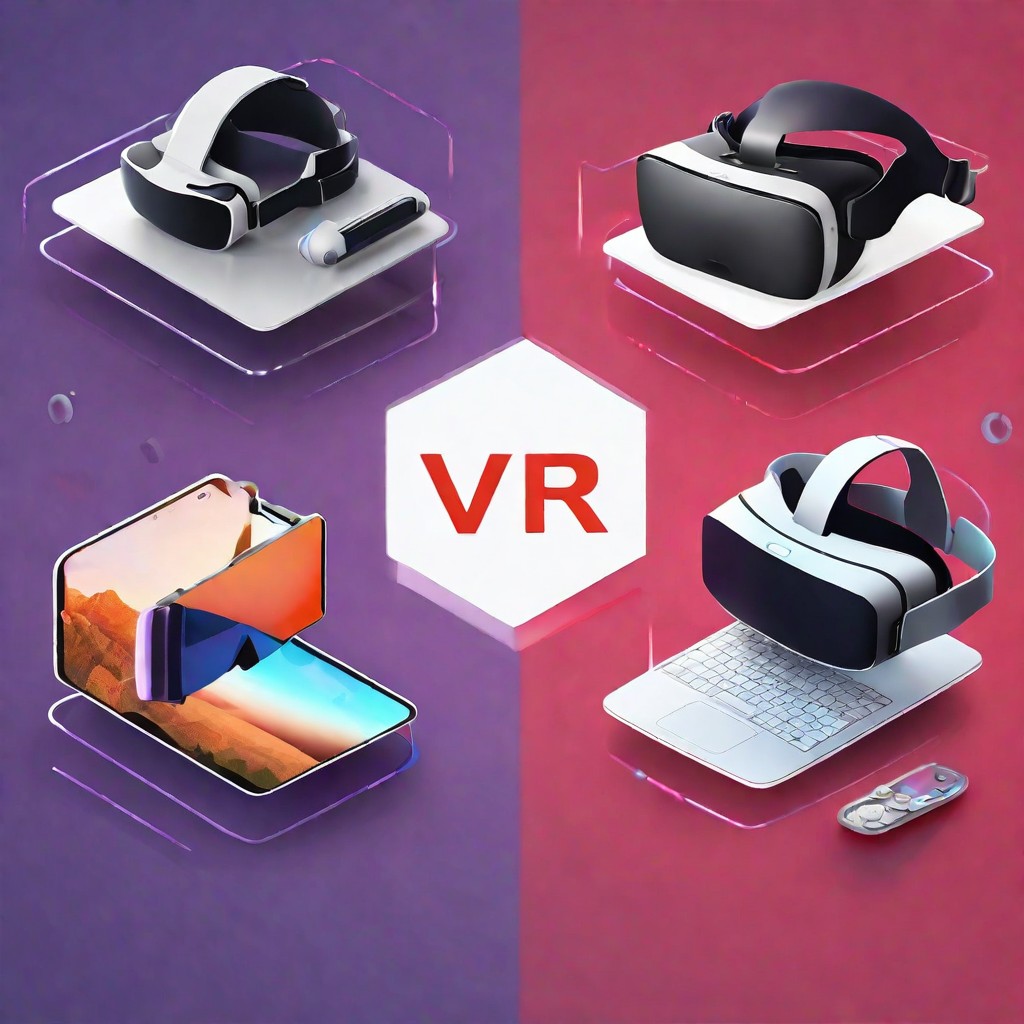Let’s dive into the world of AR vs VR vs MR to understand their differences and explore their applications
In the realm of technology, three terms have been making waves: Augmented Reality (AR), Virtual Reality (VR), and Mixed Reality (MR). These technologies have transformed the way we perceive and interact with the digital world. Although they might sound similar, each one offers a unique experience. .
Gain a comprehensive understanding of the distinctions and applications of Augmented Reality (AR), Virtual Reality (VR), and Mixed Reality (MR). By delving into these technologies, you will uncover the unique features and functionalities that set them apart. AR enhances the real world by overlaying digital information, while VR immerses users in a completely virtual environment.

MR, on the other hand, blends the virtual and real worlds, allowing users to interact with both. Each technology has its own set of applications, from AR’s use in gaming and education to VR’s role in training simulations and entertainment. MR, with its ability to merge physical and digital elements, finds applications in fields like architecture and healthcare. Understanding these differences will enable you to grasp the potential of each technology and explore their diverse applications.
AR vs VR vs MR
Augmented Reality (AR)
AR overlays digital content onto the real world, enhancing our perception of reality. It seamlessly blends virtual elements with our physical environment, providing an enriched experience. AR can be experienced through various devices like smartphones, tablets, smart glasses, or headsets.
Applications of AR
Gaming: AR gaming allows players to interact with virtual characters and objects in their real environment, creating an immersive gaming experience.
Education: AR enhances learning by bringing textbooks and learning materials to life, providing interactive and engaging content.
Retail: AR is used in the retail industry to offer virtual try-on experiences, allowing customers to visualize products before making a purchase decision.
Navigation: AR navigation apps overlay directions onto real-world surroundings, making it easier to navigate and explore new places.
Virtual Reality (VR)
VR transports users into a fully simulated digital environment, disconnecting them from the physical world. By wearing a VR headset, users are immersed in a computer-generated reality that can replicate real-life scenarios or take them to imaginative realms.
Applications of VR
Entertainment: VR provides an unparalleled level of immersion for gaming, movies, and interactive experiences, making users feel like they are part of the virtual world.
Training and Simulation: VR is extensively used for training purposes, allowing individuals to practice in realistic virtual environments without real-world consequences. It finds applications in fields such as aviation, medicine, and military training.
Therapy: VR is being explored as a therapeutic tool for treating phobias, post-traumatic stress disorder (PTSD), and anxiety by creating controlled virtual environments for exposure therapy.
Virtual Tourism: VR enables people to explore remote destinations, historical sites, or even fictional worlds without physically traveling, offering a new dimension to the concept of virtual tourism.
Mixed Reality (MR)
Mixed Reality combines elements of both AR and VR, seamlessly blending virtual content with the real world and allowing interaction with both. It enables digital objects to coexist and interact with the physical environment in real time.
Applications of MR
Design and Architecture: MR is utilized in design and architecture to visualize and manipulate 3D models in real-world settings, enabling architects and designers to see their creations at scale.
Collaboration: MR facilitates remote collaboration by creating shared virtual spaces where people can interact, communicate, and work together as if they were physically present.
Training and Prototyping: MR is used for training purposes, allowing users to practice real-world tasks with virtual objects and receive real-time feedback. It also aids in prototyping and product development by visualizing and testing concepts before physical production.
In conclusion, while AR, VR, and MR all involve immersive digital experiences, they differ in terms of how they blend the virtual and real worlds. Augmented Reality overlays virtual elements onto the physical environment, Virtual Reality creates fully simulated digital environments, and Mixed Reality seamlessly blends the virtual and real worlds.
Each technology brings unique applications and opportunities across various industries, shaping the way we interact, learn, work, and entertain ourselves in the digital age. Remember, as technology continues to advance, these realities will evolve, presenting us with even more exciting possibilities.
Discover more from TechResider Submit AI Tool
Subscribe to get the latest posts sent to your email.







